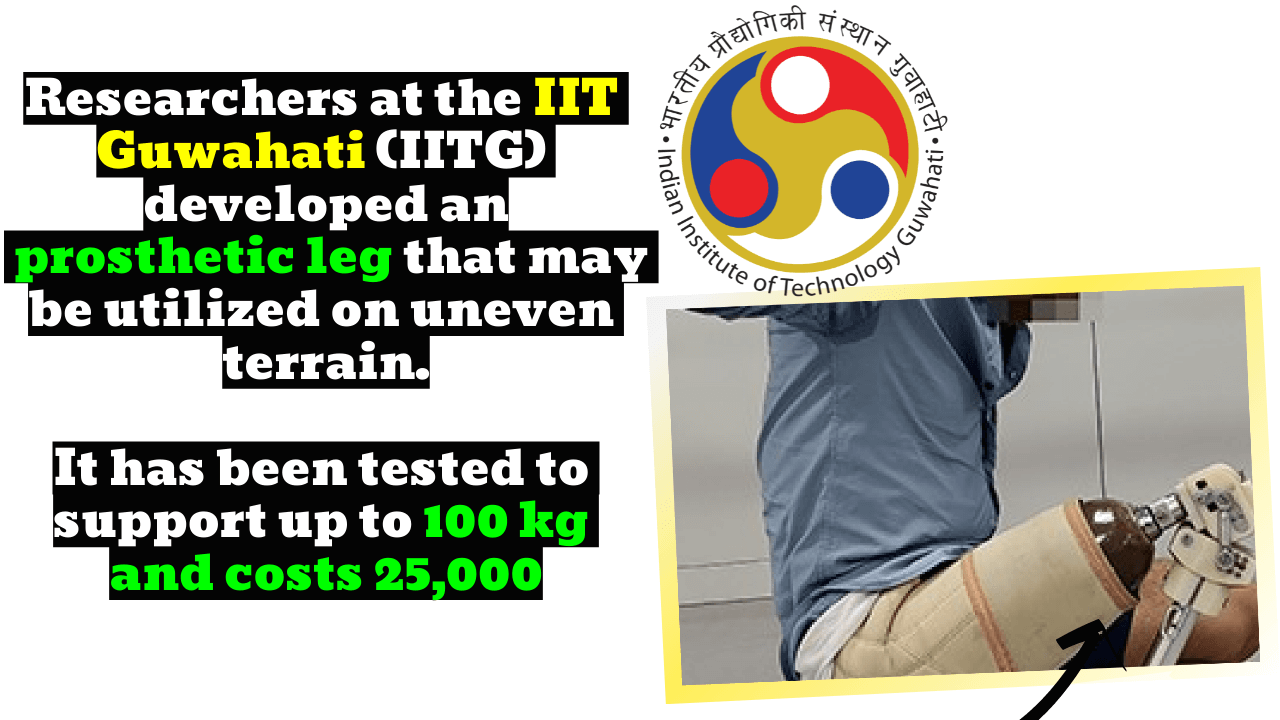Researchers at the Indian Institute of Technology Guwahati have made a prosthetic leg. The leg allows the user to sit cross-legged and squat deep, working well on uneven ground. It has been tested to hold up to 100 kg of body weight, costing about 25,000.
Key Highlight:
- Researchers at the Indian Institute of Technology Guwahati (IITG) developed a prosthetic limb that may be used on uneven terrain.
- The prosthetic leg is customizable for different age groups and prosthetic stages.
- The institute announced Monday that it supports up to 100 kg and costs 25,000.
- Low-cost prosthetics are functionally limited and not generally available.
- The research team said the user might customize the prosthetic limb, and its weight can be decreased by using plastics, aluminum, and stainless steel.
Researchers at the Indian Institute of Technology Guwahati (IITG) have made a prosthetic leg that lets its user sit cross-legged and squat deeply and can be used on uneven ground.
The prosthetic leg was made for use in India, and it can be changed to fit different age groups and stages of prosthetic use. It has been tested to hold up to 100 kg of body weight, and the institute said Monday that it would cost about 25,000.
The Ministry of Education and the Department of Biotechnology paid for the research, which was done in partnership with the Army’s 151 Base Hospital in Guwahati, the Tolaram Bafna Kamrup District Civil Hospital, the Guwahati Neurological Research Centre, and the North Eastern Indira Gandhi Regional Institute of Health and Medical Sciences in Shillong.
S. Kanagaraj of IITG’s Department of Mechanical Engineering says that developing prostheses in India is hard and that for amputees to move around well, they need expensive devices with advanced features. On the other hand, low-cost prosthetics are not very useful and are not widely available on the market.
“The knee joint our team made has a deep-squat mechanism that is helped by a spring. This makes it easier to use the Indian toilet system.” “The knee-rotating mechanism makes it easier to sit cross-legged, and the locking mechanism makes it less likely that a person will trip and fall on an unknown surface,” he said.
“An adjustable link length gives a knee more stability or makes it easier to bend, depending on the user’s age and needs. Overall, the knee joint is made to fit the Indian way of life in a way that other products don’t,” he said.
The research team said that the prosthetic leg could be changed and customized by the user to meet different needs. It can also be made lighter by choosing the right polymers, aluminum, and stainless steel for its different parts.
Scientists at @IITGuwahati develop a Prosthetic Leg, suitable for uneven terrain. It can support Indian needs such as cross-legged sitting, and deep squatting. It is also adjustable for the different age groups and multiple stages of prosthesis use. pic.twitter.com/uP8j57mmiR
— Vishwa Mohan (@vishwamTOI) June 13, 2022




